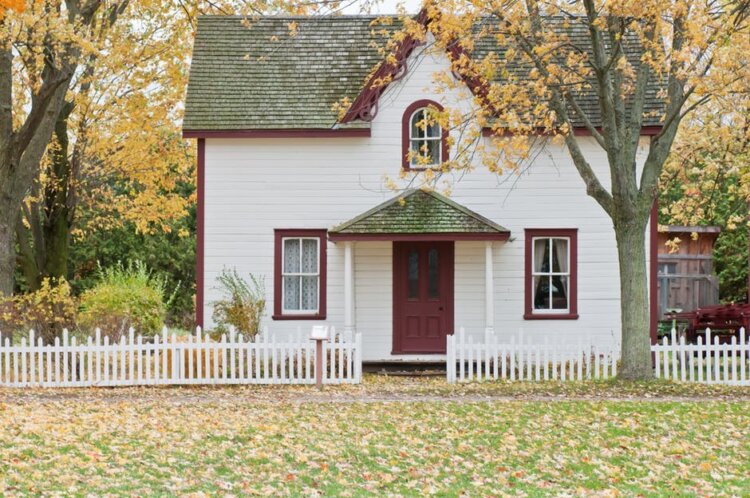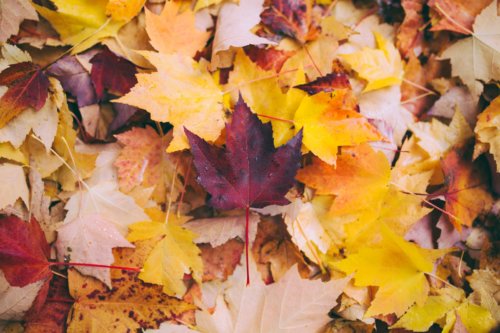
My yard is a mess and that’s just right. Leaves have started falling from the oaks and maples, blanketing the ground. Except for the asters and goldenrod, dry, dusty seed heads are all that’s left of summer’s blooms. Dead grass lies scattered on top of the lawn. Branches left over from pruning are piled off to the edge. If your ideal is a wide expanse of green swept clean, I bet you think I’m neglecting my yard and should be out raking leaves. Instead, all I see is a landscape that’s ready for its winter work.
The vegetation that we attack with leaf blowers, rakes and shovels provides food and shelter for many insects, birds, and small animals. They use the leaf cover, seeds in those dried flowers, and so much more to survive the harsh months ahead. In winter, I’ll watch finches perched on the thistle outside the windows, enjoying a snack and appreciate the way snow and ice make sculptures out of the foliage.
Beetles and spiders are examples of two beneficial insects that burrow under and into leaf piles. They can become food for hungry birds or foraging animals. And, if they make it to spring, you’ll have a community of good bugs to battle the bad ones that want to eat your plants.

Frogs and salamanders hibernate under leaves and logs, and in piles of yard debris like the ones I’ve built. According to a study referred to in a Michigan State University publication, a healthy frog population consumes more than 50,000 insects per acre over a spring and summer season. They’re welcome to all my mosquitoes.
When yard trimmings go to a landfill, they give off methane as they decompose, a greenhouse gas more potent than carbon dioxide, and one contributing to global warming. The Environmental Protection Agency reported in 2013 that almost 30 percent of solid waste comes from our yards.
As more research comes out on the damage fall yard cleanups can do to the ecosystem, organizations like Cornell University and the Nature Conservancy have public awareness campaigns in the fall to encourage people to “leave the leaves.”
With mounting pressures on ecosystems from climate change, development, non-native plants dominating the woodlands, and pests like the emerald ash borer killing trees across the country, every little bit counts. So if you have an acre or 10, a balcony or just a postage stamp of a yard, chances are it can be useful to something.
How to make the most of your messy yard
Leaves make great mulch. Instead of raking leaves, shred them with a lawn mower or weed whacker (electric, of course), and then top off flowerbeds or other landscaped areas. As the leaves decompose, they add nitrogen to the soil, a key nutrient for plant growth. The leaves also make a nice, cozy blanket on top of the soil to regulate temperature more evenly.
Leaf mold becomes a rich compost after it’s been sitting for a year, no shredding necessary. It’s as easy as making a pile and not touching it. After they’ve broken down, add a layer to a flower or vegetable garden.
But, don’t put leaves on the vegetable garden in winter! This isn’t the place where you want insects to overwinter because they’re usually not the beneficial ones. Instead, consider planting an off-season grass or grain like oats that will die by spring and add nutrients to the garden.

Gather branches while ye may. These twigs and sticks can become shelter for bees, caterpillars, and even birds. I add stalks from lilies that I’m too lazy to cut up for the compost, weeds, and diseased bits from the garden that I don’t want to compost, almost always my tomato plants have blight or some issue. Just toss it all together in an out of the way spot and see what takes you up on your offer.
Not ready for full yard messiness? Pick an area of your yard that’s more out of sight and unused. Let it be. Lawn grass goes dormant at this time of year and it won’t damage the grass to have leaf cover through the winter. That simple act of doing nothing means a lot.
Since you’re not doing fall cleanup, here are ideas of what to do with your free time, join me.
Drink cider.
Pick apples at an orchard.
Bake a pie.
Take a walk in a park or go hiking.
Knit a sweater.
Read a book.
[interaction id=”5bbf943bc641127d5e4cc674″]


Grok Nation Comment Policy
We welcome thoughtful, grokky comments—keep your negativity and spam to yourself. Please read our Comment Policy before commenting.